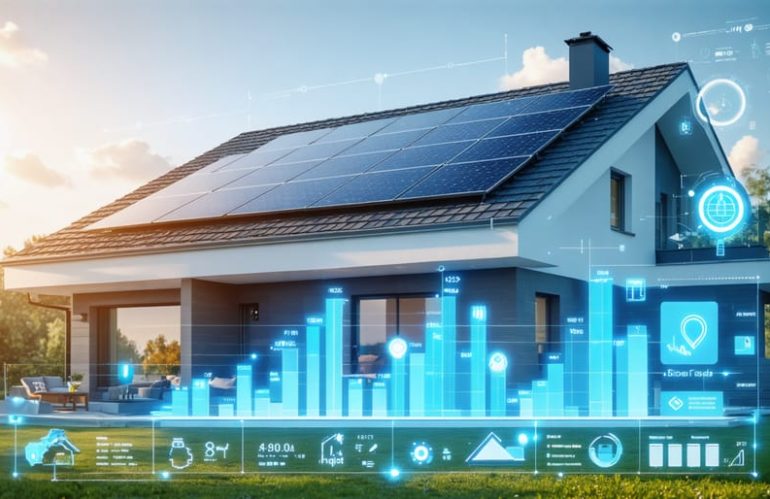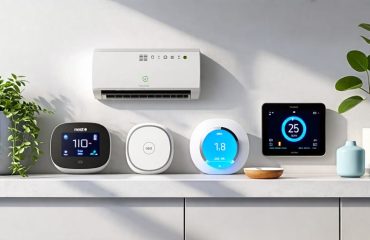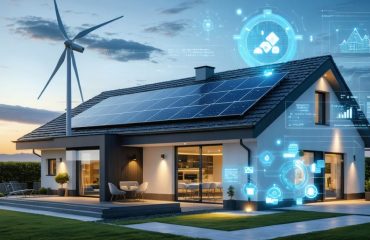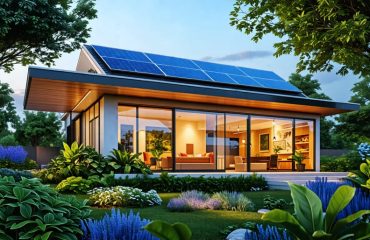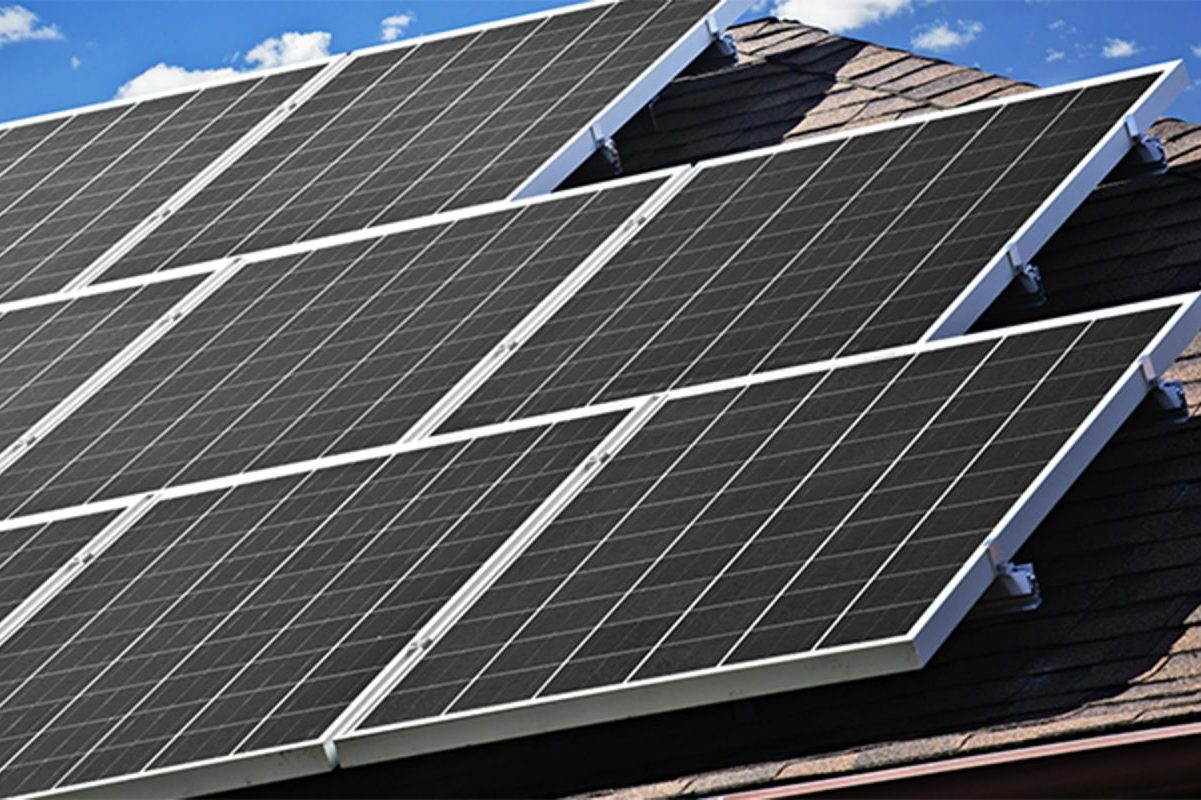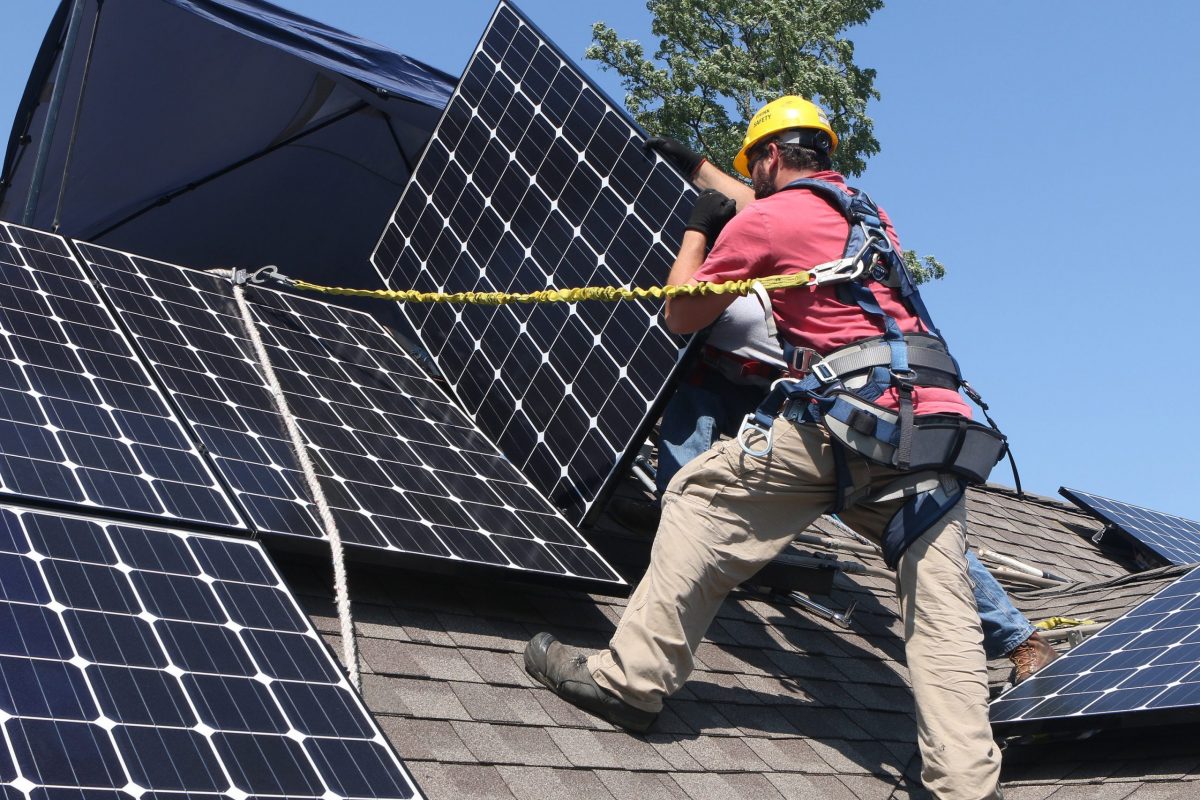Transform your home into an energy-efficient powerhouse by integrating smart home energy management systems with residential solar power basics. Modern smart energy systems automatically adjust power consumption based on real-time usage patterns, weather forecasts, and electricity rates, delivering average savings of 20-30% on monthly utility bills. These intelligent systems seamlessly coordinate solar panel output, battery storage, and grid power to maximize renewable energy usage while minimizing costs. By combining AI-driven optimization with user-friendly smartphone controls, homeowners gain unprecedented visibility and control over their energy consumption without sacrificing comfort or convenience. The latest generation of smart home energy management platforms makes sustainable living accessible to everyone, offering automated scheduling, predictive analytics, and instant alerts to prevent energy waste and optimize solar power utilization.
How Smart Home Energy Management Works With Solar
Core Components
A smart home energy management system relies on several key components working together seamlessly. At its heart is the smart meter, which provides real-time energy consumption data. This connects to a central hub or gateway that acts as the system’s brain, processing information and coordinating various devices.
Smart thermostats play a crucial role by automatically adjusting heating and cooling based on your preferences and daily routines. Smart plugs and switches allow you to control individual appliances remotely, while energy monitoring sensors track usage patterns throughout your home.
The software interface, typically accessed through a smartphone app or web portal, gives you complete control over your system. It displays detailed energy consumption data, provides customizable automation options, and sends alerts about unusual energy usage patterns.
For homes with solar panels, a solar inverter and battery storage system can be integrated to optimize renewable energy use. Smart circuit breakers and load controllers help balance power distribution, ensuring efficient use of both grid and solar power throughout the day.
Real-Time Monitoring
Real-time monitoring transforms your home into a smart energy hub, giving you unprecedented control over your power usage. Through user-friendly mobile apps and web interfaces, you can track your energy production and consumption as it happens. Watch your solar panels generate electricity throughout the day, identify peak usage times, and spot energy-hungry appliances that might be increasing your bills.
Modern monitoring systems employ AI-powered solar forecasting to predict energy generation and optimize usage patterns. These intelligent systems can alert you when energy consumption spikes unexpectedly or when your solar panels aren’t performing at their best.
The real-time data helps you make informed decisions about when to run major appliances, charge electric vehicles, or store excess energy in batteries. Many homeowners report saving 15-30% on their energy bills simply by responding to the insights provided by their monitoring systems. You’ll also receive regular reports and recommendations, making it easier to adjust your habits and maximize your energy savings while maintaining comfort.
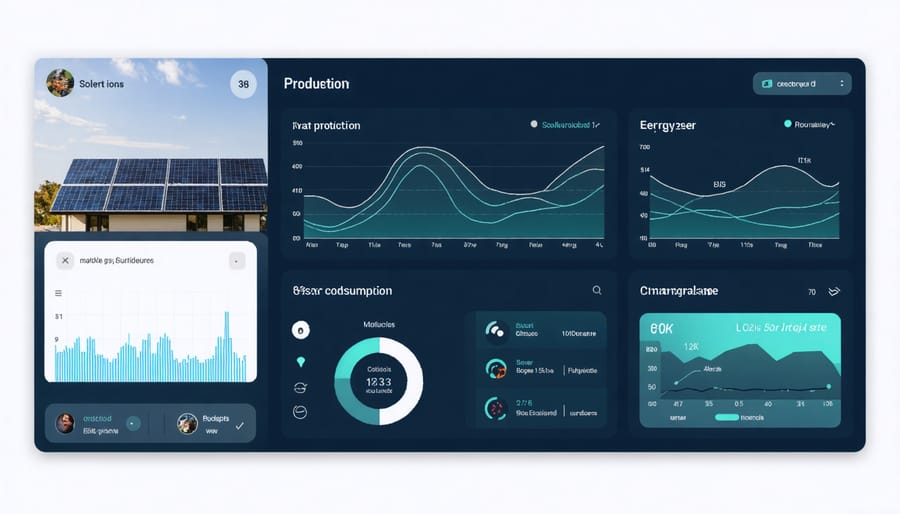
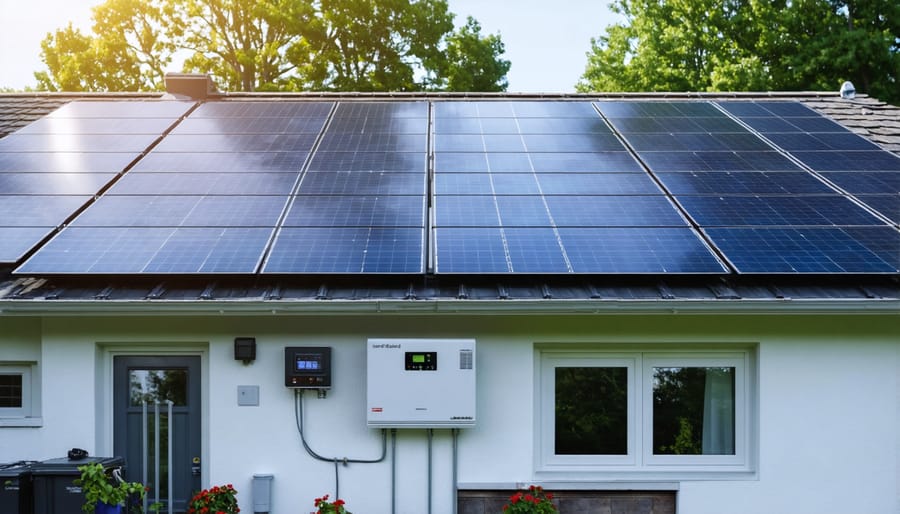
Maximize Your Solar Investment
Automated Load Shifting
Automated load shifting is a game-changing feature that maximizes your solar investment by intelligently managing when and how your home uses energy. The system monitors your solar production in real-time and automatically adjusts your home’s energy consumption to match peak solar generation periods.
Think of it as your personal energy choreographer. When the sun is shining brightest, typically between 10 AM and 4 PM, the system automatically activates energy-intensive tasks like running the dishwasher, charging electric vehicles, or heating your water tank. This smart scheduling ensures you’re using your own solar power instead of drawing from the grid.
During cloudy periods or at night, the system reduces energy consumption by adjusting thermostats, dimming non-essential lighting, and postponing high-energy activities until solar production increases. Some systems even factor in weather forecasts to plan energy usage days in advance.
The best part? This happens seamlessly without any manual intervention. You simply set your preferences once, and the system handles the rest. Many homeowners report saving an additional 20-30% on their energy bills through automated load shifting alone, compared to having solar panels without smart management.
For example, your system might automatically pre-cool your home during peak solar hours, then reduce AC usage when solar production drops, maintaining comfort while maximizing solar power use.
Smart Storage Solutions
A key component of any smart home energy management system is its integration with modern battery storage solutions. These intelligent systems work seamlessly with your home’s battery setup to maximize energy efficiency and reduce utility costs. Through advanced algorithms and real-time monitoring, the system makes intelligent decisions about when to store excess solar power and when to use it.
The secret lies in battery storage optimization, which ensures your batteries charge during off-peak hours when electricity rates are lowest and discharge during peak times when rates are highest. This smart charging strategy can lead to significant savings on your monthly energy bills while reducing strain on the power grid.
Your system can automatically adjust charging patterns based on weather forecasts, ensuring your batteries are fully charged before cloudy days or potential power outages. It can also learn your household’s energy consumption patterns and adjust accordingly, storing more power when you typically need it most.
For homes with solar panels, the system intelligently balances between immediate power usage, battery storage, and grid export. During sunny days, it can direct excess solar energy to your batteries while ensuring your immediate power needs are met. This intelligent management means you’re making the most of your renewable energy investment while maintaining a reliable power supply for your home.
Daily Benefits for Homeowners
Lower Energy Bills
A smart home energy management system can significantly reduce your monthly utility bills through intelligent energy management and automated optimization. By analyzing your household’s energy consumption patterns, the system automatically adjusts your home’s energy usage during peak and off-peak hours, potentially saving you 15-30% on monthly energy costs.
The system’s smart thermostats learn your temperature preferences and daily routines, automatically adjusting heating and cooling schedules to minimize waste. Motion sensors ensure lights and appliances aren’t running unnecessarily in empty rooms, while smart plugs cut power to devices in standby mode, eliminating phantom energy drain that typically accounts for 10% of home energy use.
During peak rate periods, the system can automatically shift energy-intensive tasks like running the dishwasher or charging electric vehicles to times when electricity rates are lowest. For homes with solar panels, the system maximizes self-consumption of solar energy by scheduling high-energy activities during peak solar production hours.
Real-time monitoring through smartphone apps allows you to track energy usage and costs, helping you make informed decisions about consumption. Many users report saving hundreds of dollars annually after implementing these systems, with some achieving payback on their investment within two to three years through reduced utility bills.
Convenience and Control
Modern smart home energy management systems put unprecedented control right at your fingertips. Through user-friendly smartphone apps and intuitive web interfaces, you can monitor and adjust your home’s energy usage from anywhere in the world. Whether you’re at work or on vacation, you’ll have real-time visibility into your energy consumption patterns and the ability to make immediate adjustments.
These systems allow you to create customized schedules for your appliances and HVAC systems, automatically adjusting temperatures and operation times based on your daily routines. You can receive instant notifications about unusual energy usage patterns or when devices are accidentally left running, helping you prevent energy waste.
Voice control integration with popular smart assistants like Alexa and Google Home makes managing your energy usage as simple as speaking a command. Want to adjust your thermostat or check your solar panel production? Just ask. The system can also learn from your preferences and habits, automatically optimizing settings for maximum efficiency while maintaining comfort.
Many platforms offer detailed energy reports and consumption analytics, making it easy to understand where you’re using the most energy and identify opportunities for savings. You can set personalized goals, track your progress, and receive tailored recommendations for improving efficiency. Some systems even gamify the experience, turning energy saving into an engaging family activity while helping you build sustainable habits.
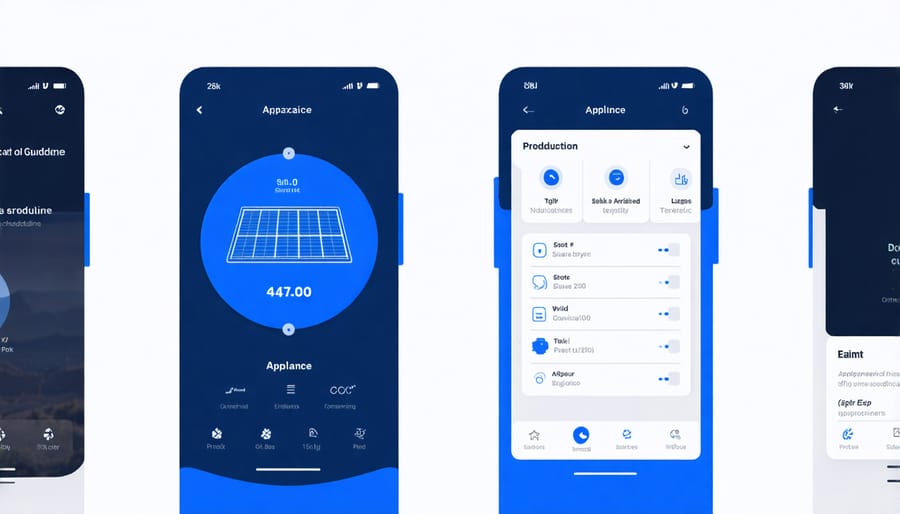
Setting Up Your Smart Solar Home
Getting Started
Getting your smart home energy management system up and running is simpler than you might think. Start by conducting a quick energy audit of your home to identify your major power consumers and establish a baseline for your current energy usage. This will help you set realistic goals and measure your success.
Next, choose a compatible smart home hub that will serve as the central control point for your energy management system. Popular options include Samsung SmartThings, Apple HomeKit, or Google Home. Make sure the hub you select works with your existing smart devices and the energy monitoring equipment you plan to install.
Install a smart electric meter or energy monitoring device at your main electrical panel. This will provide real-time data about your home’s energy consumption. Then, add smart plugs and switches to monitor and control individual appliances and devices. Focus on high-energy consumers first, such as your HVAC system, water heater, and major appliances.
Download your chosen platform’s mobile app and connect all your devices. Take time to familiarize yourself with the interface and basic functions. Most systems allow you to set up automated routines, such as turning off unnecessary devices during peak hours or adjusting your thermostat based on occupancy.
Consider starting with a few basic automations and gradually expanding your system as you become more comfortable. Common initial setups include scheduling your HVAC system, programming smart thermostats, and setting up motion-sensor-based lighting controls.
Remember to involve all household members in the setup process and ensure everyone understands how to use the system effectively. This will maximize your energy-saving potential and prevent confusion or frustration down the line.
Optimization Tips
To maximize the efficiency of your smart home energy management system, start by establishing baseline energy consumption patterns over a few weeks. This initial monitoring phase helps identify peak usage times and energy-draining habits that need attention.
Fine-tune your automated schedules based on your household’s routine. Program your thermostat to adjust temperatures during sleep hours and when the house is empty. Consider setting your washing machine and dishwasher to run during off-peak hours when electricity rates are lower.
Leverage your system’s learning capabilities by allowing it to adapt to your preferences and patterns. Many smart systems use artificial intelligence to predict usage and automatically adjust settings for optimal efficiency. Enable push notifications to receive real-time alerts about unusual energy consumption or device malfunctions.
Zone your home’s heating and cooling by using smart vents and thermostats in different areas. This prevents energy waste by heating or cooling only occupied spaces. Install motion sensors to automatically control lighting in less frequently used areas like garages or storage rooms.
Regular maintenance is crucial for system optimization. Keep software updated, clean sensors, and check device connections monthly. Review your energy reports quarterly to identify new optimization opportunities and adjust settings accordingly.
Integrate weather forecasts with your system to automatically adjust heating and cooling patterns. On sunny days, your system can automatically adjust blinds to maximize natural heat in winter or minimize it in summer.
Finally, engage all household members in energy-saving practices. Share access to the mobile app and create individual profiles to track personal usage patterns. This involvement helps maintain consistent energy-saving habits while making the most of your smart system’s capabilities.
Smart home energy management systems represent a significant step forward in our journey toward sustainable, cost-effective living. By implementing these intelligent solutions, homeowners can expect to see substantial reductions in their energy bills – typically ranging from 15% to 30% annually – while contributing to a greener future. The combination of real-time monitoring, automated controls, and data-driven insights empowers households to make informed decisions about their energy consumption without sacrificing comfort.
The benefits extend beyond mere cost savings. These systems provide unprecedented control over your home’s energy use, enhance property value, and offer peace of mind through remote monitoring capabilities. They also play a crucial role in reducing your carbon footprint, making them an essential tool in the fight against climate change.
As energy costs continue to rise and environmental concerns grow, there’s never been a better time to invest in smart home energy management. The technology has matured, becoming more affordable and user-friendly than ever before. Whether you’re starting small with smart thermostats or planning a comprehensive home energy management system, taking action today will position you for significant savings and environmental benefits in the years to come.
Don’t wait to start your journey toward smarter energy management. The sooner you implement these solutions, the sooner you’ll begin enjoying their numerous benefits while contributing to a more sustainable future for all.

